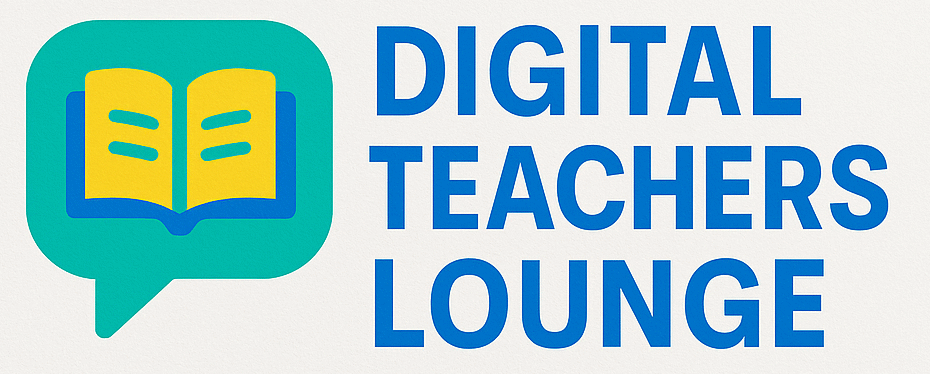The Ultimate Guide to Digital Teaching Tools: Transform Your Classroom in 2025
Teaching has never been more exciting or more demanding than it is today.
Between lesson planning, grading, and keeping students engaged, every teacher is searching for one thing: simpler, smarter ways to teach.
That’s where digital teaching tools come in. These tools aren’t about replacing teachers-they are about amplifying your impact, saving time and transforming learning into something interactive, inclusive, and inspiring.
Whether you’re a tech-savvy educator or just starting your digital journey, this guide will walk you through the best tools for teaching in 2025 and beyond, how to use them effectively, and how to build your own digital classroom ecosystem.

Why Digital Tools Matter in Modern Teaching
Education is changing fast. Today’s students are digital natives- they think, learn, and communicate differently. To connect with them, teachers must blend traditional wisdom with modern technology
Here is why digital tools are no longer optional:
They make learning interactive and engaging.
They save teachers’ time by automating grading, communication, and record-keeping.
They create inclusive classrooms where every learner can thrive
They prepare students for the digital future beyond school.
In short, digital tools don’t just improve how we teach- they redefine why we teach.
Types of Digital Teaching Tools(and How to Use Them)
Let’s break them down into practical categories every teacher should know;
- Classroom Management Tools
|
Tool |
What it Does |
|
ClassDojo |
Tracks behavior, communicates with parents |
|
Google Classroom |
Organizes assignments, grades, and feedback |
|
Remind |
Sends quick updates to students and parents. |
|
ClassroomScreen |
Visual Classroom control (Timer, Noise meter, QR code) |
Tip: It’s good to start with Google Classroom as it integrates seamlessly with tools like Docs, Forms, and Slides

2. Assessment Tools
these tools turn tests into learning moments and not stress sessions.
|
Tool |
what it Does |
Best For |
|
Kahoot |
Fun quiz competitions |
Energizing revision lessons |
|
Quizizz |
self-paced gamified quizzes. |
Engaging homework |
|
Edpuzzle |
interactive lessons with embedded questions. |
Flipped classrooms |
|
Socrative |
real-time understanding checks |
Instant feedback during lessons |
The formative assessment through tools like Kahoot and Edpuzzle helps teachers track understanding instantly and make timely interventions.
3. Content Creation Tools
These tools help you unleash your creativity and make every lesson a masterpiece.
|
Tool |
what it Does |
Best For |
|
Canva for Education |
Creates worksheets,slides, posters |
Visual teaching materials |
|
Genially |
Builds interactive presentations. |
Engaging lesson and games |
|
Book creator |
helps students create digital storybooks, |
Literacy and storytelling |
|
Loom/Screencastify |
Records video lessons |
Remote or flipped teaching. |
Tip- Canva’s for Education plan is free for teaachers and offers templates for everything, from lesson slides to certificates.
4. Collaboration Tools
Learning is better together even-online
|
Tool |
What It Does |
Best For |
|
Padlet |
Digital wall for discussion and project |
Brainstorming and sharing ideas |
|
Jamboard/micro |
Visual colaboration |
Visual collaboration |
|
Trello |
Task management boards |
Group projects and planning |
|
Google workspace |
Shared Docs, slides, and sheets |
Real-time collaboration |
Activity: Try creating a shared Padlet for weekly reflections or Collaborative research.
5. Inclusive Learning Tools.
Supports diverse learners and ensures no student is left behind
|
Tool |
What it Does |
Best For |
|
Immersive Reader(Microsoft) |
Reads text aloud, translates, simplifies language. |
students with reading challenges. |
|
Read & write |
Offers text-to-speech, word prediction, and highlighting. |
Inclusive reading and writing. |
|
Google Voice Typing |
Converts speech to text, |
writing support for learners with motor difficulties. |
How to Choose the Right Tools
it’s easy to feel lost among hundreds of apps-but simplicity wins.
Here’s how to choose wisely.
- Start with your goal, not the tool. Ask; “what problem am I solving?”
- Check accessibility and privacy policies.
- Test before committing- most tools have free versions.
- Train studetns gradually-introduce one new tool at a time.
- Seek feedback-what do your students actually enjoy using?
Remember the best tool is the one that works for you and your learners.
Building Your Own Digital Teaching Ecosystem
Every teacher should create a system that fits their teaching style.
Here’s simple setup to get started:
- Google Classroom for structure and communication.
- Canva for creative lesson materials.
- Kahoot for assessments.
- Padlet for collaboration.
- Google Forms for feedback and reflections.
This small toolkit can make your classroom fully digital, engaging, and organized.
Common Mistakes to Avoid
- Using too many tools at once. Start with 2-3 core ones.
- Skipping accessibility features-Ensure inclusivity.
- Ignoring students feedback- involve them in choosing tools.
- Not backing up content- use cloud storage wisely.
Avoid these, and your digital teaching experience will be smooth, not stressful.
Your 5-Step Roadmap to Digital Success.
- identify one classroom challenge (e.g participation)
- Choose one digital tool that solves it.
- Experiment for a week.
- Reflect on what worked.
- Share your experience with the community.
That’s it-progress through small, consistent steps.
Conclusion
Digital teaching tools are not about doing more work; they are about working smarter. They help you save time, engage students, and create classrooms where every learner can shine.
So, take one small step into the digital world this year and let your classroom transformation begin.




